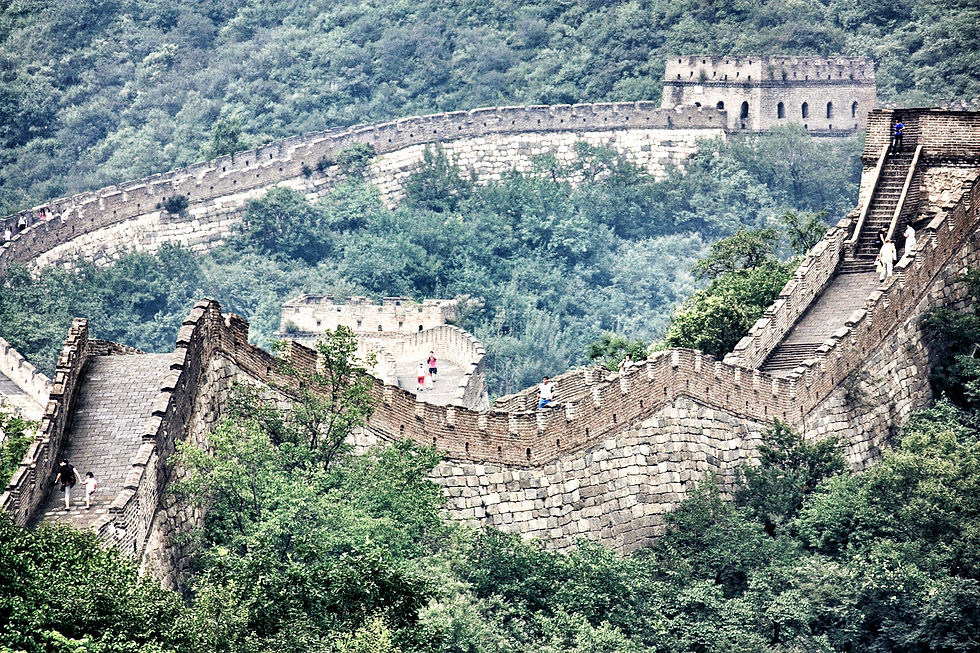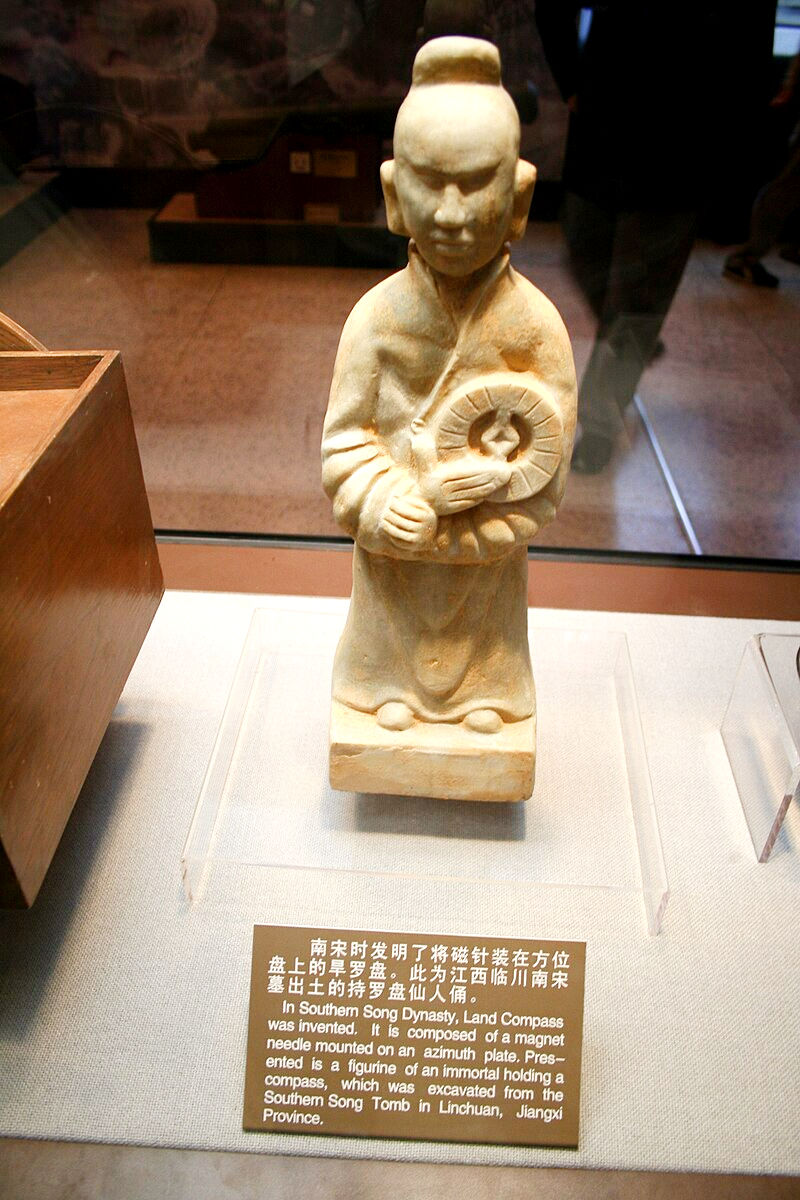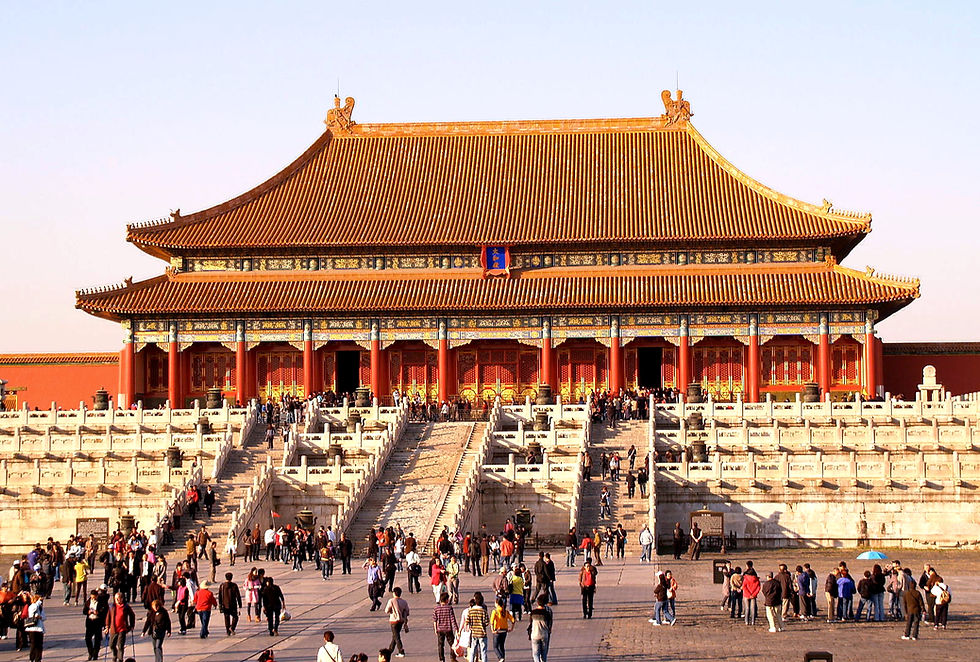The Mysteries of China: A Concise History
- Mel Bridges

- Mar 24
- 6 min read

For thousands of years, China has been a land of mystery, vibrant culture, and groundbreaking inventions. Its history is not just a series of events; it is a powerful story of a civilization with far-reaching influence over the entire world. In this post, we will explore a concise history of China, highlighting key moments and important figures.
Ancient Beginnings and the Dynastic Era
The roots of Chinese civilization can be traced back over 5,000 years along the Yellow River. The Xia dynasty (c. 2070–1600 BCE) is often cited as the first dynasty, although evidence is sparse, making its existence somewhat unclear.

Following the Xia, the Shang dynasty (c. 1600–1046 BCE) left behind significant archaeological findings, including oracle bones—sometimes known as Dragon's Bones and dated around 1200 BCE, which provide some of the earliest written records in Chinese history.(1) These bones, pieces of turtle shells or oxen shoulder blade bones, were used for divination and fortune telling. Divination reflects the societal norms and beliefs of early Chinese civilization, as people relied on fortune-telling for diverse life activities from matchmaking, financial decisions, undertaking travels, and even waging war.
In the Zhou dynasty (c. 1046–256 BCE), Confucianism and Daoism emerged as dominant philosophies, shaping Chinese thought and ethical values for centuries. These intellectual schools of thought guide behavior and decision-making in a society's development. This complex subject will be examined in greater depth in a future article.
With the collapse of the Zhou dynasty, China experienced the Warring States period, spanning from approximately 475– 221 BCE. During this period, great turmoil and unrest prevailed as seven states vied for dominance; numerous battles and wars were rampant. The chaos of this era set the stage for unification under the Qin dynasty. Significant advances in writing systems occurred with the introduction of the bronze script (jiānshū) and the development of bamboo slips (zhù).
The Unification Under Qin
In 221 BCE, the Qin dynasty placed an end to the Warring States period, unifying the country under the leadership of Emperor Qin Shi Huang. He introduced standardized measurements, currency, and writing systems, which facilitated communication and trade across vast distances.

During this time, the Great Wall's construction began, aiming to protect China from invasions by northern tribes. The wall stretches over 13,000 miles and remains a powerful symbol of China's enduring strength.
The Qin dynasty (221-206 BCE) was marked by significant achievements, but its reign was ultimately short-lived due to unpopular policies that sparked widespread discontent. The brutal suppression of dissent and heavy taxation to fund massive construction projects like the Great Wall led to internal strife and rebellion among the various tribes vying for power.
Despite its demise in 206 BCE, the Qin dynasty's innovations in governance left a lasting legacy, with standardized systems, measures, currency, and writing laying the groundwork for future Chinese dynasties, while also establishing a centralized government and bureaucratic structure that would be built upon by subsequent rulers.
The Golden Age: The Han Dynasty

With the fall of the Qin, the Han dynasty (202 BCE–220 CE) rose to power and is often regarded as a glorious chapter in Chinese history. This era saw an expansion of territory and improvements in trade, particularly along the Silk Road. In fact, the Silk Road facilitated trade that connected China to Europe, with an estimated 30-40% increase in trade volume during this period.
Innovations flourished, including the invention of paper, which revolutionized communication. Cultural highlights include Sima Qian's "Records of the Grand Historian," an essential historical text that documents China’s past.
Internal conflicts and external threats eventually led to the Han dynasty’s decline, resulting in the famous division into the Three Kingdoms. This period is legendary for its tales of heroism and political intrigue, still celebrated in modern media.
The Flourishing of Arts and Sciences

The Tang dynasty (618–907 CE) is considered one of the greatest periods in Chinese history, marked by significant cultural, scientific, and economic achievements. Poetry, such as that from Li Bai and from Du Fu, flourished during this time.
Also during this time, China's openness to foreign ideas led to a thriving exchange with neighboring countries, including India, Korea, and Central Asia.
The Song dynasty (960–1279 CE), on the other hand, ushered in major technological advancements. The introduction of the compass and gunpowder revolutionized navigation and warfare. The invention of the printing press (around 1041 CE) enabled mass production of books, facilitating education and knowledge dissemination.
Together, these dynasties shaped a distinct Chinese identity and laid the groundwork for future developments in philosophy, literature, and the arts.
The Mongol Invasion and the Yuan Dynasty
The Mongol invasion in the late 13th century resulted in the establishment of the Yuan dynasty (1271–1368 CE) under Kublai Khan, marking the first instance of foreign rule over all of China. Despite their often-criticized governance, the Mongols created a more extensive trade network with the West, documented in Marco Polo's travels, which helped usher in a new era of cultural exchange.
However, the economic strains and dissatisfaction among the native population eventually contributed to the Yuan's downfall and paved the way for the Ming dynasty.
The Ming and Qing Dynasties: Power and Isolation

The Ming dynasty (1368–1644 CE) is known for its military achievements and massive construction projects, such as the renowned Forbidden City, which served as the imperial palace. The naval explorations led by Admiral Zheng established trade connections and extended China's influence across the South China Sea and beyond. His expeditions mapped new sea routes, discovered new islands, and documented the geography, climate, and cultures of the regions visited. Chinese navigational techniques and instruments, such as the compass, were shared with other nations.
Contrastingly, the Ming dynasty began to adopt isolationist policies, limiting foreign interactions. The Qing dynasty (1644–1912 CE), founded by the Manchus, marked the territorial peak of China. Nevertheless, by the 19th century, challenges like corruption, famine, and foreign invasions weakened the Qing very significantly. The Opium Wars with Britain led to drastic changes, including the Treaty of Nanjing in 1842, which opened up trade but also marked a period of humiliation for China.
The Road to Modernization
The early 20th century heralded profound change with the fall of the Qing dynasty in 1912, leading to the establishment of the Republic of China. Intellectuals fought for reform, aiming to modernize the culture and governance. Yet, internal conflicts arose as warlords and foreign powers struggled for control.

The Chinese Civil War culminated in 1949, when communist forces led by Mao Tse-tung declared the People's Republic of China. The resulting transformation was monumental, shifting focus toward industrialization, collectivization of farming, and stringent governance.
The Great Leap Forward and the Cultural Revolution displayed the darker side for the nation, resulting in significant social upheaval and economic hardship. It is a period when China suffered mass killings, cultural annihilation — destruction of historical sites, temples, libraries, and cultural artifacts, forced reeducation, and persecution of intellectuals.
The Rise of Modern China

Following Mao’s death in 1976, China's trajectory shifted as Deng Xiaoping implemented open market reforms. These changes led to an economic explosion, with China's GDP growing at an impressively high annual rate (teetering from 3.9–15.2%) from 1978-2007.(2)
Today, China stands as a major global player, balancing its rich historical legacy with rapid modernization and growth. An economic downturn is in its midst due to increasing labor costs, rising energy and commodity prices, debt accumulation, and over-reliance on exports.
Since 2013, President Xi Jinping has been tightening his grip on China, ushering in a era of unprecedented power consolidation, restrictive social policies, and escalating international tensions. The social policies implemented have created a surveillance state in China where people's every move is monitored and dissidence is suppressed. Social media and on-line activities are heavily-censored, and human rights abuses are prevalent. Economic and financial hardships is wide-spread through housing and banking scandals.
China's international relations have been strained with Taiwan, Japan, and many Western nations due to: unfair trade practices, lack of IP protection laws – especially in tech products, cyber espionage and hacking operations, human rights abuses, regional disputes in the South China seas, military expansionism in the Taiwan Strait, and negative diplomatic incidents.
Reflections on Its Complex History

The history of China unfolds like a grand tapestry, filled with lessons and transformations. From its ancient roots to its emergence as a global leader, China's narrative continues to captivate our imagination. Understanding this concise history not only provides insights into one of the world's greatest civilizations but also highlights ongoing challenges that deserve further exploration.
Citations
Mark, Emily. (2016), "Oracle Bones", World History Encyclopedia, https://www.worldhistory.org/Oracle_Bones/
Line Chart: GDP growth (annual %) - China, World Bank Group, 1961-2023, https://data.worldbank.org/indicator/NY.GDP.MKTP.KD.ZG?end=2023&locations=CN&start=1961&view=chart






Comments